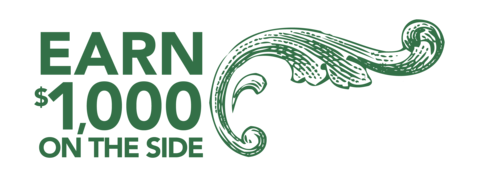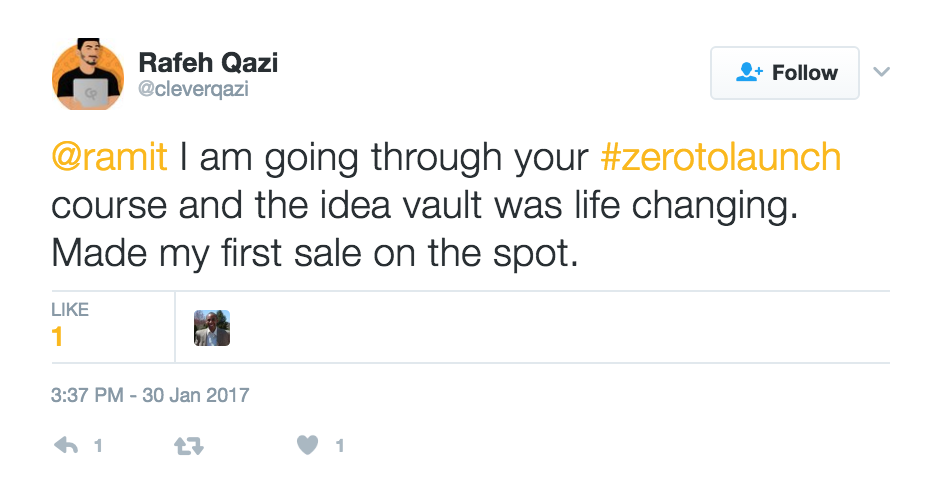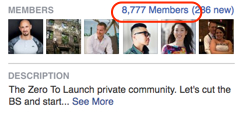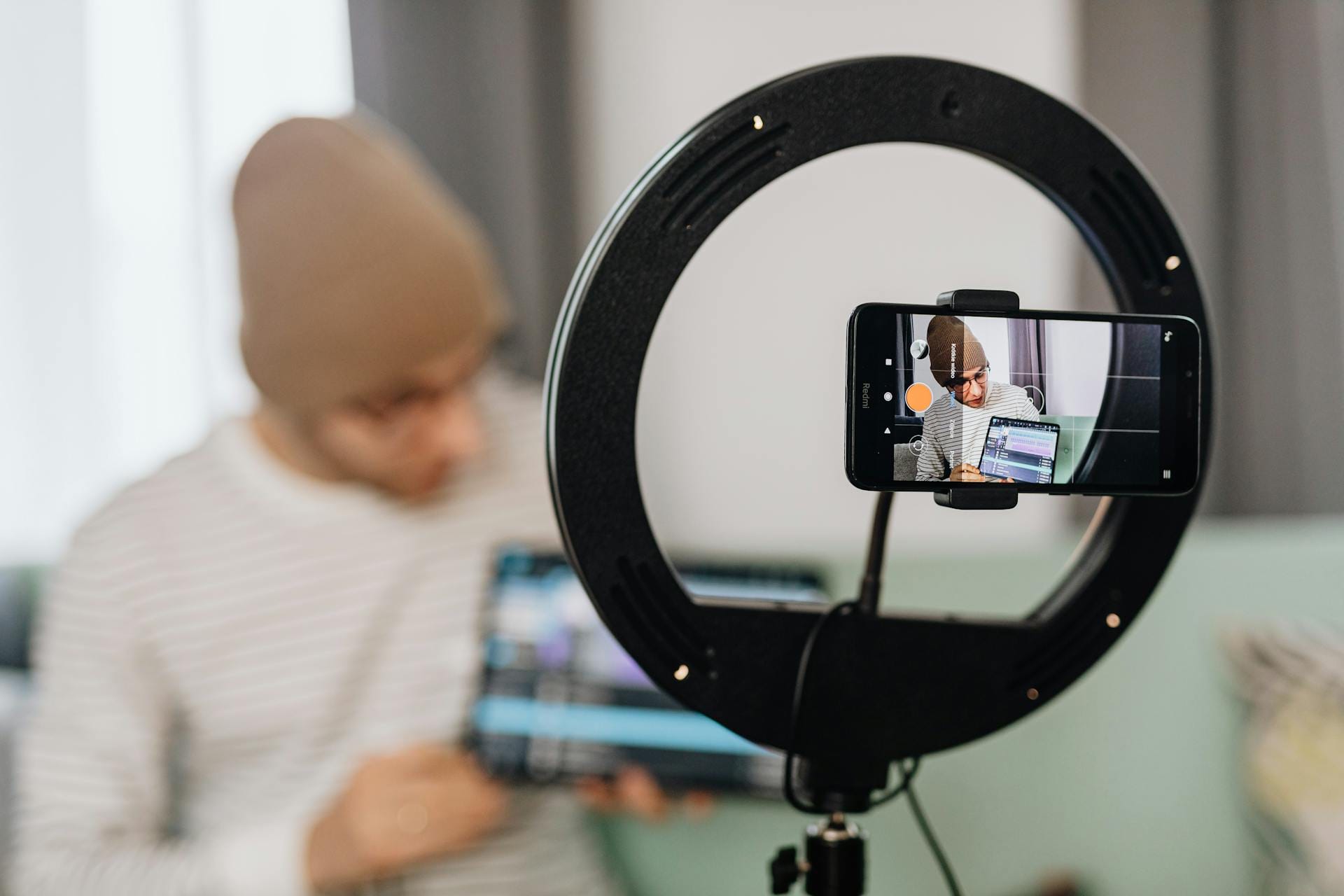
Why buy a $2,000 course when you can get the information for free?
Have you ever wondered why certain companies can charge 2x — or even 100x — what their competitors charge?
In fact, have you noticed that you actually pay 10x more for certain products…and you’re happy to do it?
How does this happen?
Why does an Equinox gym membership cost $200 when Planet Fitness costs $19.99/month?
How does a Canada Goose parka cost $1,000, when you can pick one up at Old Navy for $40?
And how can we charge $2,000 for an online course — and sometimes more — when you could just find the information for free?
If you want to charge premium prices, you’ve got to play a different game. Here’s how we do it.
[yellowbox]Bonus: The $400,000 Week: We break down the exact email sequence we used to make $400,000 is 5 days. This 5-part funnel could triple the profits from your next launch. Click here to get it for free.[/yellowbox]
You can try to turn a non-buyer into a buyer… Or you can just find 10,000 buyers
When it comes to sales, lots of entrepreneurs obsess over pricing, multiple tiers, and webinar technology.
All of those are important, but I’d rather spend my time finding buyers!
The unspoken truth: You could have the perfect webinar, an amazing price, and even a proven product, but if your business doesn’t have buyers… you’re dead.Tweet This.
So we spend an enormous amount of time and energy finding out where the buyers are. Finding an audience of buyers — people with the ability and willingness to pay — starts with where you find them. We call these “fishing holes.”
Fishing holes are the places you find your potential customers. You could “fish” via Facebook ads, SEO, affiliate relationships, press, and on and on.
We’ve spent millions of dollars and 12 years testing HUNDREDS of fishing holes full of buyers, not just click-happy looky-loos. We’ve guest posted, done podcast interviews, tested Facebook ads… and everything in between.
Anyone can find cheap audiences of people who click — but it’s much more important — and harder — to find buyers. We’ve learned that you can find buyers on sites that have a close relationship with their readers, even if it’s a “smaller” audience.
For example, check out my first guest post for Tim Ferriss from 2009 and scroll down to the comments:
Tim’s audience is a lot smaller than CNN.com, but his readers are rabid fans. Tim could recommend a new type of canned tuna, and it’d sell out on Amazon the next day.
Four years later, I wrote for The Huffington Post and asked readers to leave a comment. Guess how many did?
HuffPo sees 300,000,000 visitors a month. That’s 100x more than Tim’s blog, and it received 0 comments. Lesson learned.
We’ve also instituted sophisticated tracking to study how different sites’ visitors end up buying. In short: Big, huge sites have lots and lots of readers… but very few buyers. In other words, we learned it didn’t matter how much traffic The Huffington Post got, it wasn’t a fishing hole for us.
It takes a little testing to find the right fishing holes, but once you know a few sites where the buyers hang out, it makes all the work worth it.
We make big promises… and deliver results
Compare the difference between these two promises:

Their promise: A beginner’s guide

Our promise: Earn $1,000 on the side
Although they seem similar on the surface, they are quite different — to the tune of millions of dollars.
Why does this work?
People don’t pay for information, they pay for outcomes.Tweet This.
Sure, people might pay $5 or $10 for “tips” on how to sleep better, or 10 recipes…
…but for serious investments in personal development, people’s #1 goal is to get a big, specific outcome, not “to learn” information.
Like this:
- People want to fall in love or date more (outcomes), not simply learn how to have a healthy relationship (information). Interestingly, the outcomes often depend on gender. My favorite example of this is the course “Double Your Dating” (for men) and “Catch Him and Keep Him” (for women) — both by the same company!
- A chiseled body (for men) or a toned body (women), not “learn how to be healthy” (information). One great example is Bony to Beastly, which is the dream outcome for skinny guys everywhere.
- A better job. (Our course, for example, is called “Find Your Dream Job,” not “11 Career Options You Might Want To Consider.”)
Anyone can help you “learn” about a topic. Few can deliver specific results like this:
Boom!
Remember, people believe they want “information.” But they pay for big, specific outcomes.Tweet this.
Learn to take control of your finances and spend your money GUILT-FREE with our free Ultimate Guide To Personal Finance below:
We’re selective about who we allow to buy
Most businesses are so thrilled to get anyone to buy, they’ll move heaven and earth to close the sale: They’ll offer discounts, payment plans, and “fast action” bonuses.
However, we’ve spent years and millions of dollars creating the best product, so we’re highly selective about who we allow to use it. We actually don’t think our products are right for everyone — and we tell them on the sales page!

The decision to prohibit customers with credit card debt costs us millions per year
This flips the typical business-customer relationship on its head. Here are other ways we’re selective about our buyers:
For example, we give most of our best content away for free. So when we do charge for our premium programs, we unapologetically charge premium prices. We’ve heard this phrase thousands of times: “Damn, if your free stuff is that good, what’s in the premium course??”
When you offer a superior product to a group of buyers, price is a mere triviality.Tweet this.
We also ban anyone with credit card debt from joining our flagship courses, a decision that costs us millions of dollars a year. (We direct them to the free material, and let them know we’re happy to help when they’re debt free.)
Finally, we don’t let students buy courses directly from the website. They’re carefully vetted through challenges, an email funnel, a webinar — sometimes all 3 — before they’re ever allowed inside our “store.”
These are extreme examples, but it shows different ways you can be selective about your customers. You don’t have to do all of these things at once.
The point is, by the time you’re ready to sell, your customers should be foaming at the mouth, begging you to take their money:

When you make the decision to attract high-quality customers, the result is magical. In the self-development world, most of the serious buyers are completely ignored!
These buyers see unrealistic promises (“turnkey formula to make thousands of dollars a month by clicking a button!”) and correctly identify them as a scam.
Serious buyers are willing to do the work — they just need to find something credible to follow.
When a buyer finally sees someone who appeals to them, not the lowest-common denominator, an immediate sense of relief washes over them. “Finally! Someone who understands me.” They have the money and they’re willing to spend it — IF they can find someone they trust.
The result? A virtuous cycle of high-quality buyers joining the program, doing the work, sharing their best results in the community and online… which attracts even more high-quality buyers.

After a while, this becomes a serious business moat — a competitive advantage that continues to grow, protecting you from all the information that you can just Google for free.
You can charge premium prices for your products — but it won’t happen by following the usual advice.
Most other business “experts” focus on tactical minutiae like getting more webinar attendees or offering multiple tiers. But none of those compare to building a group of buyers who love and crave your premium products.
Instead, you can build a healthy, thriving business by identifying buyers up front, delivering big outcomes (not just information), and being selective about who you allow to use your material.
My question for you: What’s a company where you happily pay a premium price for their product? Let me know in the comments.



